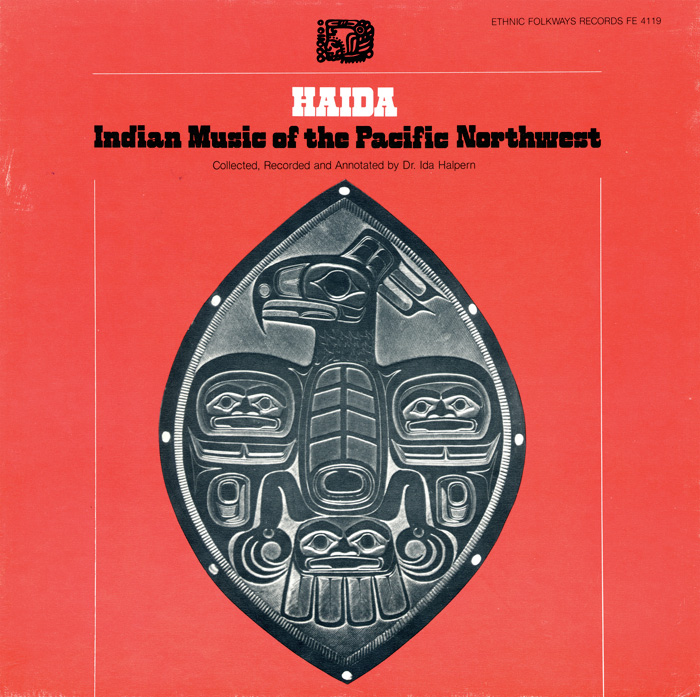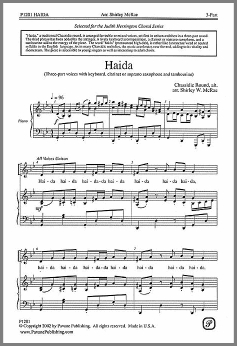
Singing the Soul of Haida Gwaii: The Enduring Power of Traditional Haida Songs
Imagine the mist-shrouded shores of Haida Gwaii, where ancient cedars stand sentinel against the relentless Pacific winds. Picture longhouses filled with the flickering light of a central fire, and the rhythmic pulse of drums echoing through the smoke. In this sacred space, voices rise, weaving intricate tapestries of sound that are far more than mere melodies. These are the traditional songs of the Haida Nation, living archives of a people, their history, their laws, and their profound connection to the land and sea.
For the Haida, an Indigenous nation whose ancestral territory lies off the coast of British Columbia, Canada, traditional songs are the beating heart of their culture. They are not simply entertainment but vital vessels of knowledge, identity, and spirit, passed down through countless generations. In a world increasingly dominated by digital noise, these ancient harmonies offer a profound testament to resilience, a vibrant thread connecting the past, present, and future of the Haida people.

The Living Libraries of a Nation
Before the arrival of Europeans and the imposition of written language, Haida songs served as the primary means of recording and transmitting a vast oral history. They are, as many Haida elders describe them, "our libraries, our history books." Every drumbeat, every vocal intonation, every repeated phrase carries layers of meaning, recounting epic creation stories, celebrating victories, mourning losses, asserting hereditary rights, and preserving the intricate social protocols that governed Haida society.
"When we sing these songs, we are calling our ancestors home," explains an elder quoted in a cultural preservation documentary. "We are walking in their footsteps, listening to their voices through our own." This profound connection to ancestry is palpable in the performance of the songs, which are often accompanied by traditional dances, elaborate regalia, and the use of hand-carved rattles and drums made from cedar and animal hides.
The repertoire of Haida songs is remarkably diverse, reflecting the multifaceted nature of Haida life. There are solemn mourning songs sung at funeral rites and memorial potlatches, intended to help the community process grief and honor the departed. Dance songs pulsate with energy, often mimicking the movements of animals like the raven, eagle, or killer whale – creatures deeply significant in Haida cosmology. Potlatch songs are central to the ceremonial feasts where wealth is redistributed, social status affirmed, and important events commemorated. These can include chief’s songs, which proclaim lineage and achievements, or property songs, which assert rights to specific territories or resources.
Beyond these formal categories, there are also work songs for canoeing or weaving, lullabies for children, and healing songs used in spiritual practices. Each type of song has its specific purpose, structure, and emotional resonance, often tied to the intricate crest system and the two main moieties of the Haida Nation: Raven and Eagle.
The musical structure of Haida songs is distinctive. They are primarily vocal, often featuring a lead singer and a chorus responding, sometimes with complex polyrhythms created by multiple drummers and rattlers. The melodies tend to be highly structured, employing repetition and subtle variations to build intensity. The vocal delivery can range from deep, guttural chants to soaring, high-pitched laments, all delivered with powerful emotional conviction. The sound of a cedar rattle, filled with pebbles or puffin beaks, adds a unique percussive layer, mimicking the sound of rain or wind, further connecting the music to the natural environment of Haida Gwaii.
The Shadow of Silence: Colonialism’s Impact
For centuries, this vibrant oral tradition flourished, evolving with each generation while maintaining its core integrity. Then came the devastating impact of colonialism. The late 19th and early 20th centuries saw a systematic assault on Indigenous cultures across Canada, including that of the Haida. The infamous Potlatch Ban, enacted by the Canadian government in 1884 and lasting until 1951, outlawed the very ceremonies where many of these songs were performed. Simultaneously, the establishment of residential schools forcibly removed Haida children from their families and communities, punishing them for speaking their language or practicing their traditions.

This period was catastrophic. The forced suppression of ceremonies, the shame associated with cultural practices, and the intergenerational trauma inflicted by residential schools pushed many songs to the brink of extinction. Elders who held vast repositories of knowledge passed away without having the opportunity to share it openly. The chain of transmission was severely broken. For decades, the once vibrant soundscape of Haida Gwaii was replaced by a chilling silence, a stark reminder of what had been lost.
The Resurgence: A Symphony of Resilience
Despite these profound challenges, the spirit of the Haida Nation endured, and with it, a deep-seated desire to reclaim what was nearly lost. Beginning in the latter half of the 20th century, a powerful cultural resurgence began to take hold. Elders, many of whom had secretly maintained their knowledge despite the dangers, stepped forward to share their precious memories and teachings.
Key to this revitalization has been the painstaking work of documenting, learning, and teaching the traditional songs. Researchers, linguists, and dedicated community members worked alongside the few remaining knowledge keepers to record melodies, lyrics, and the stories behind them. This often involved listening to old wax cylinder recordings made by ethnographers decades earlier, or simply sitting patiently with elders, absorbing their wisdom.
Language revitalization efforts have gone hand-in-hand with the musical revival. The Haida language, Xaad Kil, is critically endangered, with only a handful of fluent speakers remaining. However, language nests, immersion programs, and community classes are working tirelessly to teach younger generations. Since songs are intrinsically linked to language, their revival provides a powerful incentive and context for language learning. As one young Haida woman noted, "To sing our songs, we need to understand our language. They’re two sides of the same coin."
Today, the sounds of Haida traditional songs are once again echoing across Haida Gwaii. Youth are embracing their heritage with passion, learning from elders and participating in performances at community events, cultural festivals, and even international gatherings. The Haida Gwaii Museum at Kay Llnagaay, the Haida Heritage Centre, and various community organizations play crucial roles in facilitating this cultural transmission, providing spaces for learning, practice, and celebration.
More Than Music: Healing and Identity
The resurgence of traditional songs is not merely an act of cultural preservation; it is a profound act of healing. For many Haida people, reclaiming their songs is a way to address the intergenerational trauma inflicted by colonialism, to reconnect with their identity, and to strengthen community bonds. Singing together fosters a sense of belonging, pride, and continuity. It is a powerful affirmation of who they are and where they come from.
"When we sing, the pain leaves us," says a Haida matriarch. "It fills us with strength, with the power of our ancestors. It reminds us that we are still here, we are strong, and our culture is alive."
The songs also serve as an educational tool, not just for Haida youth but for the wider world. They offer a unique window into a rich and complex worldview, demonstrating the deep respect the Haida have for their environment, their intricate social structures, and their spiritual beliefs. Visitors to Haida Gwaii, if fortunate enough to witness a performance, often speak of the profound impact of the music – its raw emotion, its ancient beauty, and its undeniable power.
Looking to the future, the challenge lies in ensuring that this vibrant tradition continues to thrive. This means continued dedication to language revitalization, ongoing support for cultural education programs, and fostering environments where young people feel empowered to learn and innovate within traditional frameworks. It means respecting the protocols around sharing these sacred songs, ensuring they are performed in appropriate contexts and with proper understanding.
The traditional songs of the Haida Nation are more than just melodies from a distant past. They are living, breathing entities, pulsating with the history, resilience, and enduring spirit of a people deeply rooted in their ancestral lands. As the drums beat and the voices rise from the shores of Haida Gwaii, they carry not only the echoes of ancient times but also a powerful message of hope and cultural continuity for generations to come. They are, truly, the soul of Haida Gwaii, sung into being, enduring through time.


